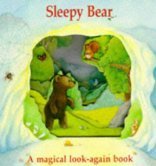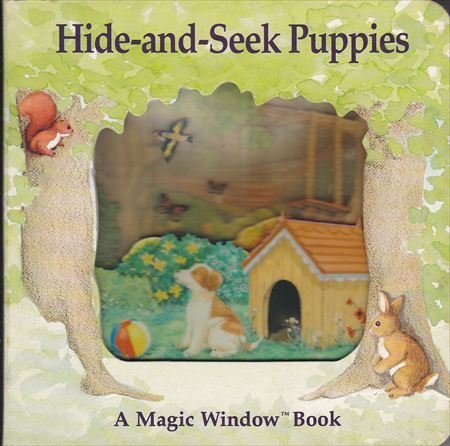-
The Treasure of Pirate Island: A Lift-The-Flap Playbook
Matt Mitter, Segundo, Rosa, Tom Brenner
Board book (Readers Digest, Aug. 1, 1998)Captain Claw's crew hunts treasure K
K
-
Sleepy Bear
Stewart Cowley, Kate Davies
Board book (Readers Digest, Nov. 1, 1993)When Sleepy Bear looks for a more comfortable bed, all his friends offer their own sleeping places, but somehow none of them is quite right K
K
-
The Innocents Abroad
Mark Twain
Hardcover (Reader's Digest, July 5, 1990)Mark Twain considered this a travel book although he complained in his forward that he expected to be criticized for departing from normal travel writing style. The book is mainly composed of newspaper columns he wrote for a San Francisco journal along with letters he wrote to other newspapers. He was interested in pointing out the conflict between history and the modern world. As he journeyed along he continually voiced his outrage, bewilderment, or boredom with the events he encountered, although his frequent bluster was couched with entertaining humor.
-
Hide-And-Seek Puppies
Stewart Cowley, Kate Davies
Board book (Readers Digest, Nov. 1, 1992)Five puppies play a game of hide-and-seek G
G
-
Do Animals Take Baths?: Questions Kids Ask About Animals
Neil Morris, Toni Goffe
Hardcover (Readers Digest, April 1, 1995)Provides simple answers to questions about animals, including such topics as their size and speed, flight, tails, houses, communications, and families M
M
-
The Moonstone
Wilkie Collins
Hardcover (Readers Digest, Nov. 1, 2002)T.S. Eliot called `The Moonstone the first and greatest English detective novel. The novel is worthy of such praise. The story begins with a brief prologue describing how the famous yellow diamond was captured during a military campaign in India by a British officer in 1799. The action moves quickly to 1848 England, where, according to the British officers will, the diamond has been given to one of the soldiers young relatives, Rachel Verinder. Yet only hours after the diamond arrives at the Verinder estate, it disappears. Was it stolen by a relative? A servant? And who are these three Indian men who keep hanging around the estate? `The Moonstone is told from the point of view of several characters. The first portion of the tale is told by Gabriel Betteredge, house steward of the Verinder estate, who has been working for the family practically his entire life. Betteredges account holds the readers interest as he introduces the main players and the crime itself. The next account, by distant Verinder relative Miss Clack, is humorous and somewhat important. But after Miss Clacks account, things really take off at breakneck speed. Readers who latch onto the T.S. Eliot quote expecting a modern detective tale will be sorely disappointed. You aren't going to see anything resembling Jeffrey Deaver, James Patterson, Sue Grafton, or even Mary Higgins Clark. You also wont see Mickey Spillane, Dashiel Hammett, or Raymond Chandler. Nor will you see Agatha Christie, Dorothy Sayers, or Martha Grimes. You wont even see Arthur Conan Doyle. But you WILL see the novel that influenced them all. You'll also see something else. Something that modern mystery/detective writers have for the most part lost. Characters. Oh sure, modern writers have characters, but for the most part, the reader only learns enough about the character to forward the plot. In our time, plot is King.
-
Fisher Price Busy Town Lift the Flap
Elenor Fremont, Si International
Board book (Reader's Digest, Aug. 1, 2000)This special lift-the-flap book transforms the Little People® town into a wonderful place to explore early learning concepts. Children can learn about colors, food, vehicles, counting, matching, and what people do by opening dozens of surprise-filled flaps. G
G
-
Where Do Ants Live?: Questions Kids Ask About Backyard Nature
Neil Morris, Jan Lewis
Hardcover (Readers Digest, April 1, 1995)Provides simple answers to questions about nature, including such topics as weather, the seasons, plants, birdsong, and insect life M
M
-
Are You Still Mad
Elenor Fremont, Kathy Couri
Paperback (Reader's Digest, Sept. 1, 1999)After having a fight, best friends Sonya and Anna decide it is more fun to play than to stay mad at each other M
M
-
Revenge of the Fallen: Mix & Match
David Roe
Board book (Reader's Digest, May 26, 2009)Everyone knows Transformers change from robots to vehicles, but you’ve never seen them change like they do in this Mix & Match book. Inspired by Revenge of the Fallen, the new Transformers movie, this colorful book lets kids create countless character combinations by simply flipping one or more of the three die-cut panels on each page. Imagine a Transformer that has Optimus Prime’s head, Bumblebee’s body, and Ratchet’s legs. That’s just one of more than 200 unique Transformers combinations readers can make with this playful book. I
I
-
Brave Knights to the Rescue: A Lift-The-Flap Playbook
Matt Mitter, S. I. Artists, Segundo
Board book (Readers Digest, Aug. 1, 1998)Young readers are invited to help a group of knights search for a damsel in distress, cross a maze, attack a castle, find the lady, and celebrate their return to town. On board pages. K
K
-
Around the World in 80 Days
Jules Verne, Joseph Ciardiello, Jack Sullivan
Hardcover (Readers Digest, Nov. 1, 1988)Around the World in Eighty Days was written during difficult times, both for France and for Verne. It was during the Franco-Prussian War (1870–1871) in which Verne was conscripted as a coastguard, he was having money difficulties (his previous works were not paid royalties), his father had died recently, and he had witnessed a public execution which had disturbed him. However despite all this, Verne was excited about his work on the new book, the idea of which came to him one afternoon in a Paris café while reading a newspaper. The technological innovations of the 19th century had opened the possibility of rapid circumnavigation and the prospect fascinated Verne and his readership. In particular three technological breakthroughs occurred in 1869-70 that made a tourist-like around-the-world journey possible for the first time: the completion of the First Transcontinental Railroad in America (1869), the linking of the Indian railways across the sub-continent (1870), and the opening of the Suez Canal (1869). It was another notable mark in the end of an age of exploration and the start of an age of fully global tourism that could be enjoyed in relative comfort and safety. It sparked the imagination that anyone could sit down, draw up a schedule, buy tickets and travel around the world, a feat previously reserved for only the most heroic and hardy of adventurers. Although a journey by hot air balloon has become one of the images most strongly associated with the story, this iconic symbol was never deployed in the book by Verne himself , but dismissed, it "would have been highly risky and, in any case, impossible."